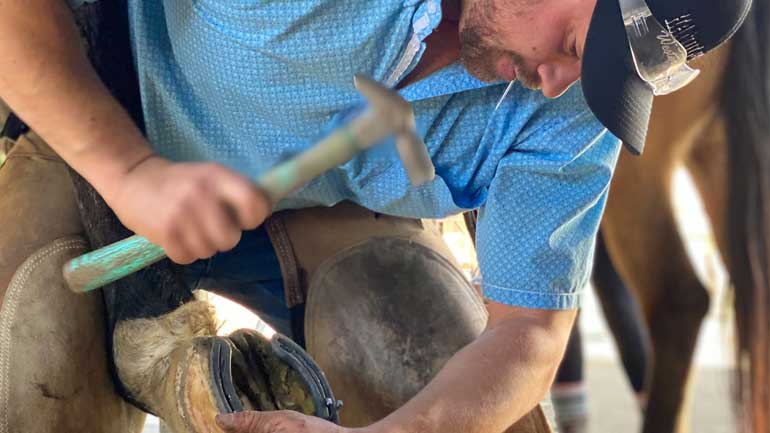If you want to become a farrier, you have to have confidence in the school that you select. You have to know that the school will get you to where you want to go in the horseshoeing world and that the staff and the curriculum will help you meet your goals.
Where to Start if You Want to Become a Farrier?
First of all, you have to develop your goals. Then you have to find a program that fits your needs. Picking a school just because it's close to home is insane. It’s the most common practice in horseshoeing schools in America. It’s like saying that you're going to get married, but you’ll only consider marrying the person next door because it's convenient. It’s a poor choice.
There are no formal apprenticeship programs anywhere in America. It's great when our graduates can get into someone's truck, but that doesn't always happen. We’ve designed our curriculum so that someone can graduate and start their farrier practice, even if they can only ride along with another farrier one or two days a week.
All of our instructors have been horseshoeing full time, as their sole source of income for at least 10 years before we hire them. They must have had the experience of providing for themselves and their families, paying rent or a mortgage, and covering their truck payments from the income from their farrier practice to be qualified to teach.
Hanging steel on the bottom of a foot is not horseshoeing. Running a successful farrier practice is also being a soul-proprietor of a small business. Our students have to know that running the business is the focus of our program before they enroll, so they have confidence that we can get them where they want to go in life.
You have to decide what kinds of horses you want to work on before you choose your school. We don't bring in ill-mannered green-stock. It’s hard to teach a student how to balance a moving foot. If you are looking to be able to do ranch work, and learn to use ropes to immobilize an unbroke horse for shoeing, PCHS isn’t for you. Our students want to be professional farriers and work on quality horses that stand quietly.
Public Vs. Private Education
Students need to understand the difference between public education and private vocational education. We assume that every student who enrolls in our program is mature, hardworking, and dedicated to the task of learning as much as they can in the time allotted in the program. We demand that of our students.
It's the students’ responsibility to set realistic goals and be determined to reach them. Horseshoeing requires lots and lots of repetitive practice. Our students must dedicate time to practice and be aware of where their deficits lie.
Teachers can help students brainstorm goals and training schedules, but ultimately, it's the student’s responsibility to follow through with executing the plan. In our program, students must have the perseverance to work through difficult tasks because there's going to be many.
They must work through their challenges until they reach their educational goals. That's their responsibility. If they have clearly defined goals and self-confidence, they'll find a way to succeed. If they don't, that's something we can't teach in a horseshoeing program.
Students cannot be passive in their training and education at PCHS. In public schools, they may be required to memorize stupid dates like when did Balboa discover the Pacific Ocean? That's not the kind of stuff we do in a vocational school—everything we do assists in shoeing horses for a living.
Our students have to believe in themselves when they enter our program. To succeed as a horseshoer, you've got to be confident and dedicated and have a strong work ethic. We don’t teach those things here. We can’t open a drawer and hand each student a strong work ethic as they walk into the classroom.
Don’t expect to mindlessly participate in the horseshoeing program and come out as a successful farrier. Our students have to dedicate themselves to the program AND to growing their businesses after they graduate. Once a student leaves the school, we have little to no influence. Students’ decisions and work ethic are up to them.
It’s Not The School
Once in a blue moon, a farrier who is unhappy with their apprentice (a graduate of ours) calls us. “This guy can't even forge a clip.” That’s not true; you have to be able to forge and fit clips to pass the program. What’s happening here is the student hates clips and doesn’t want to practice, so they’re blaming the program.
When you see someone not very capable after attending any training school, particularly one that's been in existence for a long time, don't automatically assume that the school let the student down. Most of the time, the student only did the minimum of what was required to graduate that program. In doing that, they let themselves down.
If you plan on taking any educational program, particularly something hands-on, like horseshoeing, you have to take responsibility for your work ethic, your attitude, and your desire. These are things that only you have control over. The man at the top of the mountain did not fall there. He got there from hard work, dedication, and sacrifice.
When you decide that you want to attend PCHS, own it. We are excited to teach you when you get here. Apply Now
